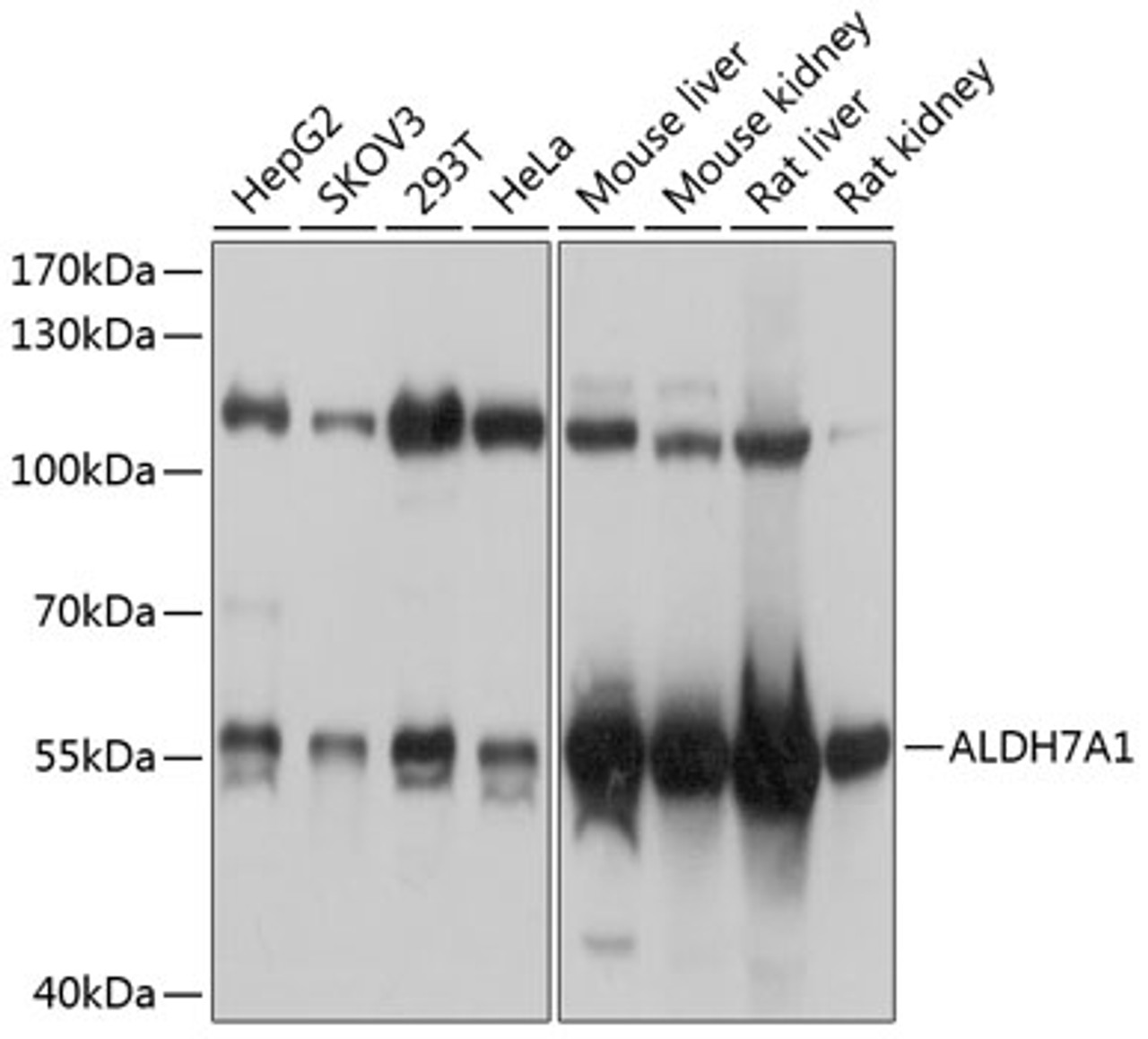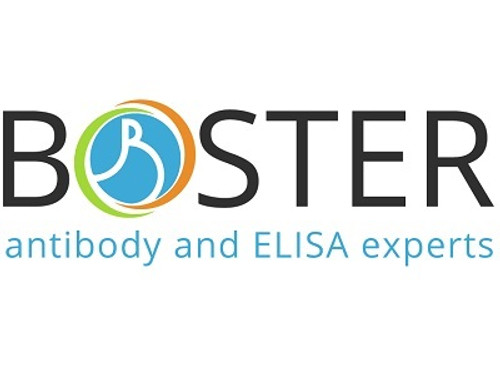Product Description
ALDH7A1 Antibody | 23-693 | ProSci
Host: Rabbit
Reactivity: Human, Mouse, Rat
Homology: N/A
Immunogen: Recombinant fusion protein containing a sequence corresponding to amino acids 430-539 of human ALDH7A1 (NP_001173.2) .
Research Area: Other
Tested Application: WB, IHC, IF
Application: WB: 1:1000 - 1:4000
IHC: 1:50 - 1:200
IF: 1:50 - 1:200
Specificiy: N/A
Positive Control 1: HepG2
Positive Control 2: SKOV3
Positive Control 3: 293T
Positive Control 4: HeLa
Positive Control 5: Mouse liver
Positive Control 6: Mouse kidney
Molecular Weight: Observed: 58kDa
Validation: N/A
Isoform: N/A
Purification: Affinity purification
Clonality: Polyclonal
Clone: N/A
Isotype: IgG
Conjugate: Unconjugated
Physical State: Liquid
Buffer: PBS with 0.02% sodium azide, 50% glycerol, pH7.3.
Concentration: N/A
Storage Condition: Store at -20˚C. Avoid freeze / thaw cycles.
Alternate Name: ATQ1, EPD, PDE, alpha-aminoadipic semialdehyde dehydrogenase, 26g turgor protein homolog, P6c dehydrogenase, alpha-AASA dehydrogenase, antiquitin-1, betaine aldehyde dehydrogenase, delta1-piperideine-6-carboxylate dehydrogenase, epididymis secretory sperm binding protein
User Note: Optimal dilutions for each application to be determined by the researcher.
BACKGROUND: The protein encoded by this gene is a member of subfamily 7 in the aldehyde dehydrogenase gene family. These enzymes are thought to play a major role in the detoxification of aldehydes generated by alcohol metabolism and lipid peroxidation. This particular member has homology to a previously described protein from the green garden pea, the 26g pea turgor protein. It is also involved in lysine catabolism that is known to occur in the mitochondrial matrix. Recent reports show that this protein is found both in the cytosol and the mitochondria, and the two forms likely arise from the use of alternative translation initiation sites. An additional variant encoding a different isoform has also been found for this gene. Mutations in this gene are associated with pyridoxine-dependent epilepsy. Several related pseudogenes have also been identified.
 Euro
Euro
 USD
USD
 British Pound
British Pound
 NULL
NULL












